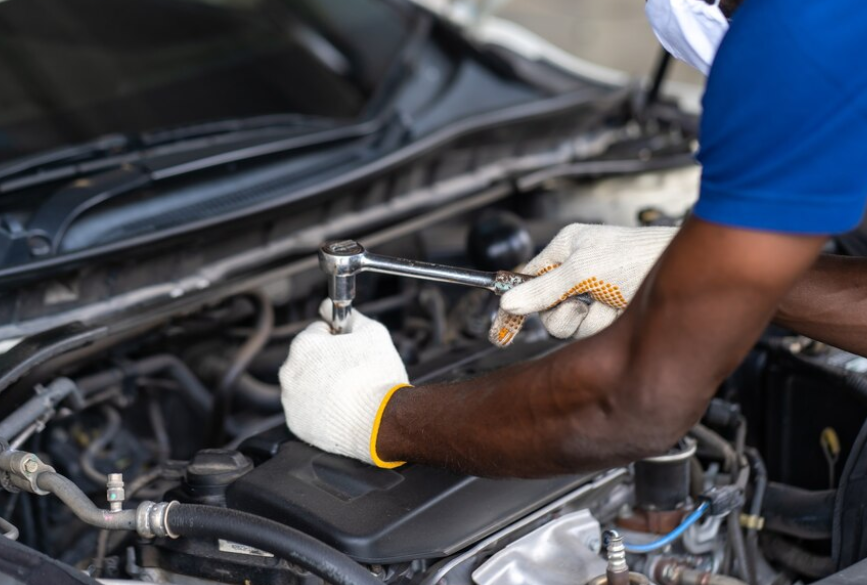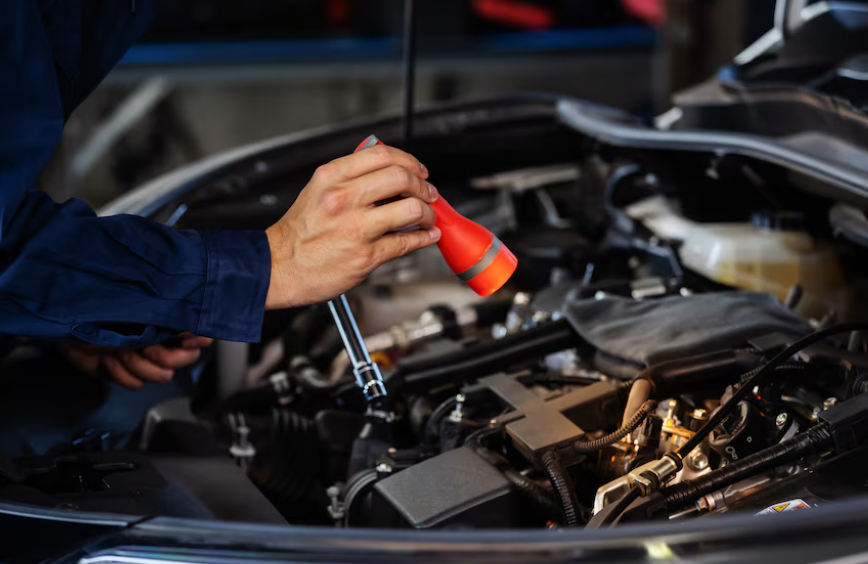Learn How to Unseize an Engine that ran out of Oil.
The article assures you that a car engine seized due to lack of oil isn’t necessarily a lost cause.
There’s a way to potentially fix it, and they’ll provide the details.
Don’t be discouraged by what you might have heard – with the right approach, you can bring your engine back to life.

Source: (Freepik)
Steps to Follow to Unseize An Engine That Ran Out of Oil
Taking Things Apart:
- If oiling didn’t work (especially for smaller engines), you might need to disassemble the engine. This involves separating the cylinder head and crankshaft.
- Examine each cylinder for problems. If nothing obvious is found, remove the cylinder head to get a better look.
- Focus on the cylinder that caused the seizing. Try to rotate the crankshaft and gently tap the piston out using a wooden block that won’t damage the engine.
- Important: Be very careful during this process. Mistakes can cause further damage beyond what this guide can help with. If you’re unsure, seek professional help.
Damage Assessment:
- Seizing from lack of oil damages both the cylinder and piston. Broken rings could be the culprit for the seizing.
- Inspect the piston rings. If they’re okay, try rotating them in their grooves. Lubrication might solve the problem if they’re stuck. If not, replace the rings.
- The piston might be warped from the seizing. Carefully clean it and check for cracks or tears. If damaged, call a mechanic.
Putting It Back Together:
- Examine the connecting rods and wrist pin bearings. Worn pins can cause knocking sounds.
- Inspect the connecting rods for any damage. Wrap them for protection if you’re installing new rings. Make sure you know the proper direction and positioning of the ring bevels and gaps.
- Once the pistons are back in, lubricate both the pistons and cylinders with clean engine oil. You can use a compressor to help seat the rings in their grooves.
- Reassemble the engine and try turning it. It should move freely now.
Can an engine be fixed after running out of oil?
- Running your car without oil can damage the engine.
- You might be able to get it fixed, but repairs can be expensive.
- In the worst case, the engine might be too damaged to fix and need a complete replacement, which could cost more than the car itself!

Source: (Freepik)
FAQs on Unseizing An Engine That Ran Out Of Oil
Q: Why does an engine seize up without oil?
- A: Oil acts like a protective layer between engine parts, reducing friction and heat. When oil is gone, parts rub directly against each other, causing them to overheat, warp, and get stuck together (seize).
Q: Can additives help unseize an engine?
- A: Maybe, but not guaranteed. Some additives claim to fix seized engines, but they might not address the real damage caused by no oil. It’s better to try manual methods first and call a mechanic for serious problems.
Conclusion
While unseizing an engine after oil depletion is possible, it’s a complex process with uncertain results.
This guide provides steps for disassembly, damage assessment, and reconstruction, but success depends heavily on the severity of the damage.
If you’re comfortable with mechanical work, following these steps can potentially save you money.
However, for extensive damage or a lack of confidence, seeking professional help is strongly advised to avoid causing further harm and ensure a proper repair.
Remember, prevention is key! Regularly checking and maintaining your oil levels can prevent this situation entirely.